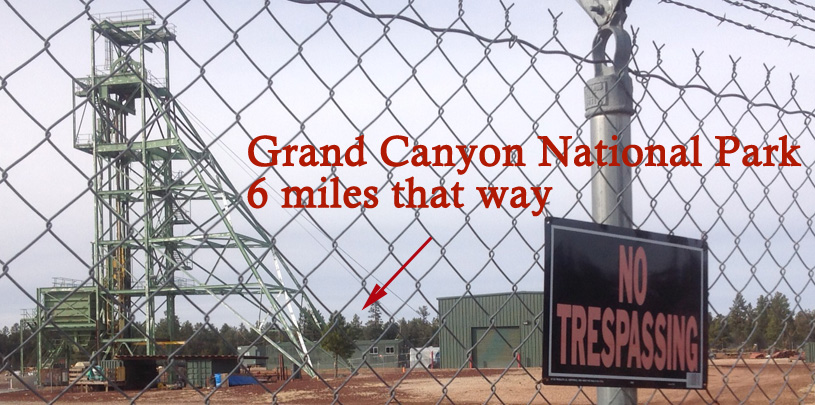
 by Roger Clark, Grand Canyon Director
by Roger Clark, Grand Canyon Director
The same day that American Rivers listed the Colorado River in the Grand Canyon as America's Most Endangered River, U.S. District Court Judge Campbell denied a request to halt a uranium mine located six miles from the South Rim.
Canyon Mine first opened in the late 1980s, but it closed due to a drop in uranium prices before the mine shaft reached ore. It re-opened briefly, shutting its doors again when uranium prices fell. Now thanks to another recent bump in uranium prices, mine owners are planning to open Canyon Mine again this summer.
The Havasupai Tribe, the Grand Canyon Trust, and allies challenged the U.S. Forest Service’s decision to allow Energy Fuels Inc. to reopen the mine without completing formal tribal consultations and updating an obsolete federal environmental review dating to 1986. Uranium mining on public land surrounding Grand Canyon threatens tribal cultural values, as well as aquifers and streams that sustain the Grand Canyon and the Colorado River.
Water samples, summarized by the U.S. Geological Survey (USGS) in 2010, showed that 15 springs and five wells contained dissolved uranium concentrations in excess of U.S. Environmental Protection Agency standards for drinking water. The USGS report concluded that these contaminated sites “are related to mining processes.” Federal and state agencies have ignored these findings and continue to permit uranium mines to operate without requiring monitoring wells to detect contamination.
A small victory in the legal case challenging Daneros uranium mine, near Bears Ears National Monument.
Read MoreGroundwater pumping at a uranium mine near the Grand Canyon will affect the canyon's springs, scientists says.
Read MoreA rally in Salt Lake City followed by a spiritual walk in White Mesa demonstrate the Ute community's determination to see uranium mill close.
Read More